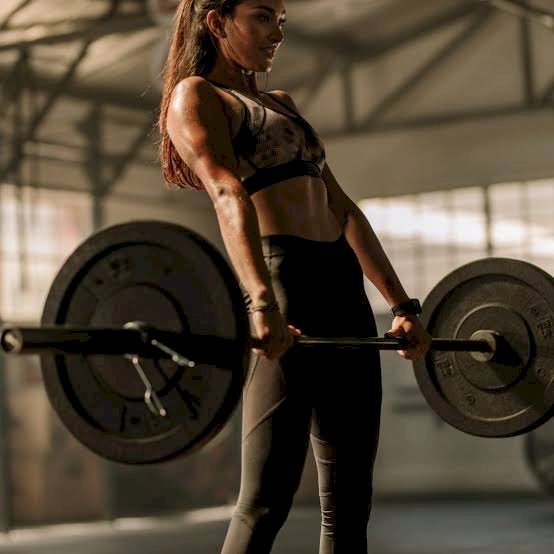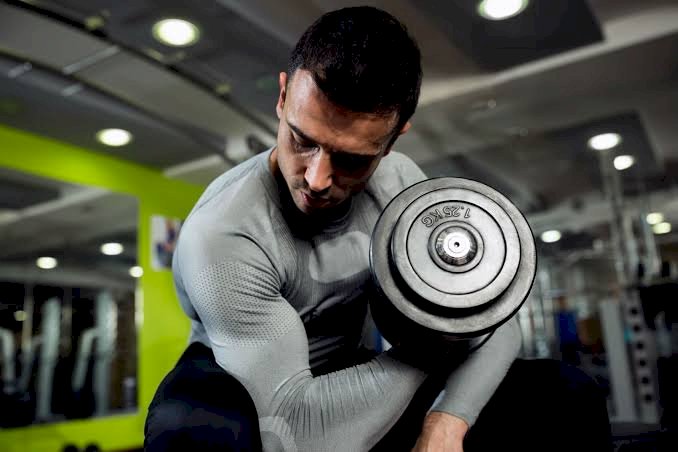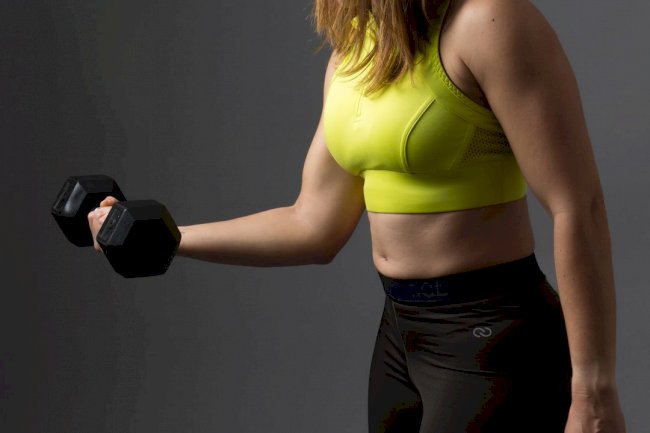Strength Training For Men And Women
Benefits of adding Strength training to your workout routine.
To begin with, what is strength training?
Strength training, like resistance training, uses opposing force to build strength across your body and increase your muscle mass. It is a method of training that helps you increase your muscular strength and build muscle mass and can use many different types of training. The goal of strength training is to provide a stimulus to the body that requires an adaption response.
However for beginners, it focuses more on compound exercises. These are movements that recruit multiple muscle groups until you've built enough strength to isolate muscles and work them to their limit.
One frequently asked question by women is, "will strength training make me bulk up"?
No. This is for a number of reasons, the most important of which is that women tend to naturally have less muscle mass than men due to lower testosterone levels. So, you're not going to wield a dumbbell and make the type of strength gains seen on bodybuilders and professional weightlifters. It takes time, dedication and effort to put on muscle mass like that. In reality, you'll sculpt lean muscle and burn more energy throughout the day – a result of muscle tissue burning more calories at rest than fat.
Plus, lifting weights can give your testosterone a natural boost, something that's been linked with muscle gain, more energy and sexual desire.
What are the Benefits?
-
Lowers Cholesterol.
-
Improves stress.
-
Increases muscle mass.
-
Improves body composition (the ratio of body fat to muscle you have).
-
Improves posture.
-
Decreased risk of injury.
-
Increases bone density.
-
Improves sleep.
Strength training doesn’t just help you get strong and feel sturdy (something that’s important as we reach our later years). It's also good for heart health, can lower cholesterol, help with posture and keep your metabolism ticking over as muscle tissue is more metabolically active than fatty tissue. This means your body will burn more energy at rest the more muscle tissue you have.
Although strength training can get your heart pumping when you’re new to it or when you start lifting heavy, you’ll find the rest periods between sets and the focus required can actually help you to be more mindful and feel less stressed.
How do you start strength training as a beginner?
Ideally, a beginner weight lifting routine should include 8 to10 exercises targeting the major muscle groups. This total-body routine does exactly that and can be performed a few times a week to maintain and build strength all over. Start small with your weights, and increase as needed: Choose a weight that's just heavy enough to complete 10 reps, and by that eighth rep, you feel really happy it's almost over. This will ensure you're challenging your muscles so they can grow and get stronger while also burning the max calories in every workout.
The Actual Plan, How it Works
1 Dumbell Chest Press
Do 2 sets of 10 to 15 reps of each exercise. Repeat it two or three times a week on alternate days. (If you think this is still too hard, then try this super-basic strength training plan that uses workout balls, light dumbbells, and bodyweight moves to build a strength base.)
How to do it
-
Lie on a bench, elbows bent 90 degrees out to sides.
-
Straighten arms up and return. Keep the weights centered over the middle of the chest.
Muscles worked: Chest, shoulders, triceps.
Benefits
Your chest is one of your largest upper body muscles, and when it comes to chest training, the chest press reigns supreme," says Freeman. "It's a compound movement, meaning that it's also working your anterior deltoids [the front of your shoulders] and triceps throughout the movement."
2 One Arm Dumbell Row
-
Stand with legs hip-width apart and place one hand on the bench, opposite arm holding weight below shoulder.
-
Draw elbow up toward ribs and lower. Keep back flat and stand with a 45-degree bend at the hips.
Benefits
The single-arm dumbbell row is a great compound upper-body movement targeting your upper back, lats, and traps while your biceps and shoulders assist throughout," says Freeman. "Standing during this exercise is also a great way to get some extra core work in as well. Just remember that there should be ZERO momentum or swinging.
Muscles worked: Upper back
3 Bicep Curl
How to do it
-
Stand with arms extended in front of thighs and one dumbbell in each hand with palms facing forward.
-
Slowly curl weights toward shoulders, then lower to starting position.
Benefits
This is the best isolation exercise for your biceps. The key here is to nix all momentum; don't swing to get the dumbbell up. "Think about trying to pin your elbows at your sides and lift the dumbbell up completely with your biceps," he says. "Stop at the top before your elbows move away from your sides, meaning if the weights touch your shoulders you've gone too far.
Muscles worked: Biceps
4 Triceps Extension
How to do it
-
Stand with legs hip-width apart.
-
Lean forward from the waist, elbows bent 90 degrees at sides.
-
Straighten arms.
Benefits
The triceps extension is a great isolation move where you don't need a lot of weight to feel the burn. Similar to the biceps curl, the key here is to think of your elbow as a hinge pinned at your side. "The only thing that should be moving is your elbow to straighten your arm, squeezing your triceps at the top and return.
Muscles worked: Triceps
5 Basic Squat
How to do it
-
Stand feet a bit wider than hips-distance apart, toes turned slightly out.
-
Keeping weight in the mid-foot and heels (not the toes), sit back and down. Keep knees in line with toes and focus on keeping chest lifted.
-
Lower until thighs are parallel to the floor, if possible.
Benefits
Squats have become the more popular of all lower-body exercises, especially if you're looking to grow your glutes!". But keep in mind: "Safety is a must in this exercise to avoid injury, specifically to the lower back area. If you're newer or returning to exercise, it's often best to start with bodyweight only and focus completely on flexibility and proper form. If you can't go that low without dropping your chest forward, then keep working on your flexibility." Once your form is on-point, you can start to add weight.
Muscles worked: Legs, butt
How quickly can i build strength?
Newbie gains (quick improvements in strength) are a real thing in the strength training world. It’s relatively easy for anyone new to weight training to see real improvements in a relatively short space of time. 'Strength can be built daily, from using your own bodyweight to progressing into using kettlebells, barbells and all the kit in the gym,'. ‘You will see the biggest development within the first few weeks as your body adapts to new stimuli,'.
But you must be consistent with your training. ‘Two weeks on, one week off won’t quite cut it – make a plan and stick to it. In general, strength training two to three times a week will see your strength increase by around 10% in as short as a fortnight.' After a few consistent months of training, you should see an increase of around 20-30% from where you started. But, crucially, this will be different for every individual depending on lifestyle, nutrition and recovery.
What's Your Reaction?























